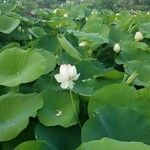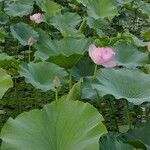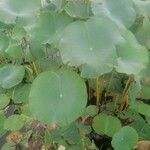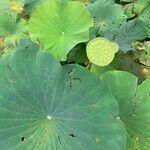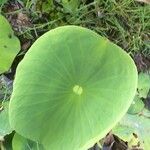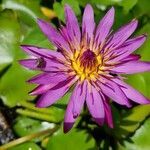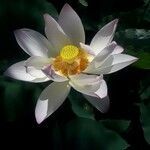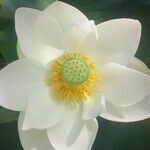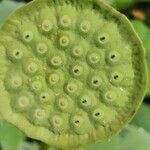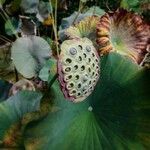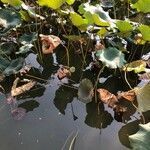| Therapeutic use
|
Hematologic diseases (aerial part), Liver diseases (aerial part), Bronchitis (bark), Jaundice (bark), Liver diseases (bark), Pneumonia (bark), Typhoid fever (bark), Abortifacient agents (flower), Analgesics (flower), Anti-bacterial agents (flower), Antidotes (flower), Antifungal agents (flower), Anti-infective agents (flower), Anti-inflammatory agents (flower), Antipruritics (flower), Antipyretics (flower), Antitoxins (flower), Aphrodisiacs (flower), Asthma (flower), Astringents (flower), Bronchitis (flower), Cardiotonic agents (flower), Cholagogues and choleretics (flower), Cholera (flower), Cholinesterase inhibitors (flower), Conjunctivitis (flower), Cough (flower), Demulcents (flower), Diarrhea (flower), Digestive system diseases (flower), Diuretics (flower), Dizziness (flower), Dysentery (flower), Dysmenorrhea (flower), Dyspepsia (flower), Endophthalmitis (flower), Erysipelas (flower), Exanthema (flower), Expectorants (flower), Eye diseases (flower), Fever (flower), Filariasis (flower), Furunculosis (flower), Halitosis (flower), Headache (flower), Heart diseases (flower), Hematologic diseases (flower), Hemoptysis (flower), Hemorrhage (flower), Hemorrhoids (flower), Hypnotics and sedatives (flower), Hypoglycemic agents (flower), Inflammation (flower), Kidney diseases (flower), Leprosy (flower), Leukorrhea (flower), Liver injury (flower), Liver diseases (flower), Menorrhagia (flower), Obesity (flower), Pain (flower), Pectoralis muscles (flower), Anti-poisoning (flower), General tonic for rejuvenation (flower), Skin diseases (flower), Stomatitis (flower), Syphilis (flower), Thirst (flower), Ulcer (flower), Urination disorders (flower), Vertigo (flower), Vomiting (flower), Wound healing (flower), Wounds and injuries (flower), Platelet aggregation inhibitors (flower), Cooling effect on body (flower), Antiemetics (fruit), Anti-infective agents (fruit), Antipruritics (fruit), Diarrhea (fruit), Digestive system diseases (fruit), Leprosy (fruit), Leukorrhea (fruit), Menorrhagia (fruit), General tonic for rejuvenation (fruit), Vision disorders (fruit), Analgesics (leaf), Anticonvulsants (leaf), Antifungal agents (leaf), Antineoplastic agents (leaf), Antipyretics (leaf), Anxiety disorders (leaf), Central nervous system depressants (leaf), Digestive system diseases (leaf), Diuretics (leaf), Dizziness (leaf), Dysmenorrhea (leaf), Dysuria (leaf), Elephantiasis (leaf), Erysipelas (leaf), Fever (leaf), Furunculosis (leaf), Headache (leaf), Hemorrhage (leaf), Hemorrhoids (leaf), Inflammation (leaf), Insecticides (leaf), Jaundice (leaf), Leprosy (leaf), Liver diseases (leaf), Malaria (leaf), Pain (leaf), Skin diseases (leaf), Stomatitis, aphthous (leaf), Stress, physiological (leaf), Thirst (leaf), Urination disorders (leaf), Wound healing (leaf), Antepartum hemorrhage (leaf), Cooling effect on body (leaf), Abdominal pain (rhizome), Antifungal agents (rhizome), Anti-inflammatory agents (rhizome), Antipyretics (rhizome), Antithyroid agents (rhizome), Astringents (rhizome), Bronchitis (rhizome), Cardiotonic agents (rhizome), Cholagogues and choleretics (rhizome), Cholera (rhizome), Cough (rhizome), Demulcents (rhizome), Diabetes mellitus (rhizome), Diarrhea (rhizome), Diuretics (rhizome), Dizziness (rhizome), Dysentery (rhizome), Dyspepsia (rhizome), Dysuria (rhizome), Emaciation (rhizome), Erysipelas (rhizome), Exanthema (rhizome), Fever (rhizome), Heart diseases (rhizome), Hemorrhage (rhizome), Hemorrhoids (rhizome), Hypnotics and sedatives (rhizome), Hypoglycemic agents (rhizome), Immunosuppressive agents (rhizome), Liver diseases (rhizome), Neurasthenia (rhizome), Neurotic disorders (rhizome), Pain (rhizome), Scabies (rhizome), Skin diseases (rhizome), Skin diseases, infectious (rhizome), Syncope (rhizome), Thirst (rhizome), Vomiting (rhizome), Wound healing (rhizome), Abortifacient agents (root), Analgesics (root), Anticonvulsants (root), Antifungal agents (root), Antitussive agents (root), Astringents (root), Biliary tract diseases (root), Cardiotonic agents (root), Chest pain (root), Cough (root), Demulcents (root), Diarrhea (root), Diuretics (root), Dysentery (root), Dyspepsia (root), Disorder of ejaculation (root), Emollients (root), Filariasis (root), Hematologic diseases (root), Hemorrhoids (root), Hypersensitivity (root), Laryngeal diseases (root), Liver diseases (root), Menorrhagia (root), Skin diseases (root), Smallpox (root), Thirst (root), Vitiligo (root), Wound healing (root), Analgesics (seed), Anti-bacterial agents (seed), Antidotes (seed), Antiemetics (seed), Anti-infective agents (seed), Anti-inflammatory agents (seed), Antioxidants (seed), Antipruritics (seed), Antipyretics (seed), Antispermatogenic agents (seed), Aphrodisiacs (seed), Astringents (seed), Cardiotonic agents (seed), Contraceptive agents (seed), Demulcents (seed), Diabetes mellitus (seed), Diarrhea (seed), Diuretics (seed), Dyspepsia (seed), Expectorants (seed), Eye diseases (seed), Fertility agents (seed), Hemorrhoids (seed), Hypnotics and sedatives (seed), Hypothermia (seed), Immunomodulation (seed), Insecticides (seed), Leprosy (seed), Leukorrhea (seed), Liver diseases (seed), Menorrhagia (seed), Migraine disorders (seed), Parkinson disease (seed), Pregnancy (seed), General tonic for rejuvenation (seed), Skin diseases (seed), Urinary bladder diseases (seed), Vision disorders (seed), Vomiting (seed), Cooling effect on body (seed), Diabetes mellitus (shoot), Analgesics (stem), Anthelmintics (stem), Bronchitis (stem), Diarrhea (stem), Diuretics (stem), Dyspepsia (stem), Dysuria (stem), Filariasis (stem), Helminthiasis (stem), Hematologic diseases (stem), Jaundice (stem), Leprosy (stem), Liver diseases (stem), Nervous system diseases (stem), Oliguria (stem), Pneumonia (stem), Skin diseases (stem), Typhoid fever (stem), Urination disorders (stem), Vomiting (stem), Wound healing (stem), Antipyretics (tuber), Dysmenorrhea (tuber), Edema (tuber), Furunculosis (tuber), Stomatitis, aphthous (tuber), Wound healing (tuber), Abdomen (unspecified), Alcoholism (unspecified), Antidote (unspecified), Bacteriostat (unspecified), Chest (unspecified), Cholera (unspecified), Circulation (unspecified), Complexion (unspecified), Cosmetic (unspecified), Deobstruent (unspecified), Depurative (unspecified), Diarrhea (unspecified), Diuretic (unspecified), Dysentery (unspecified), Dyspepsia (unspecified), Ejaculation (unspecified), Enteritis (unspecified), Epistaxis (unspecified), Fever (unspecified), Gonorrhea (unspecified), Hairblack (unspecified), Heart (unspecified), Hematemesis (unspecified), Hematochezia (unspecified), Hematuria (unspecified), Hemoptysis (unspecified), Hemorrhage (unspecified), Hemostat (unspecified), Insomnia (unspecified), Intellect (unspecified), Leucorrhea (unspecified), Medicine (unspecified), Neurasthenia (unspecified), Panacea (unspecified), Sedative (unspecified), Skin (unspecified), Smallpox (unspecified), Spasm (unspecified), Spleen (unspecified), Tonic (unspecified), Tumor(Abdomen) (unspecified), Vermifuge (unspecified), Virility (unspecified), Bruise (unspecified), Antiemetic (unspecified), Cancer(Cervix) (unspecified), Sclerosis(Limb) (unspecified), Spermatorrhea (unspecified), Vertigo (unspecified), Demulcent (unspecified), Flux (unspecified), Intestine (unspecified), Labor (unspecified), Metrorrhagia (unspecified), Post-Partum (unspecified), Puerperium (unspecified), Refrigerant (unspecified), Semen (unspecified), Stomachic (unspecified), Decoagulant (unspecified), Ringworm (unspecified), Sunstroke (unspecified), Tea (unspecified), Analgesics (unspecified), Anthelmintics (unspecified), Antidepressive agents (unspecified), Antiemetics (unspecified), Antifungal agents (unspecified), Antipyretics (unspecified), Astringents (unspecified), Biliary tract diseases (unspecified), Cardiotonic agents (unspecified), Cardiovascular diseases (unspecified), Cholagogues and choleretics (unspecified), Cholestasis (unspecified), Digestive system diseases (unspecified), Diuretics (unspecified), Dysuria (unspecified), Emollients (unspecified), Expectorants (unspecified), Heart diseases (unspecified), Helminthiasis (unspecified), Hemorrhoids (unspecified), Hemostasis (unspecified), Hypnotics and sedatives (unspecified), Hypohidrosis (unspecified), Leprosy (unspecified), Leukorrhea (unspecified), Liver diseases (unspecified), Menorrhagia (unspecified), Nervous system diseases (unspecified), Pain (unspecified), General tonic for rejuvenation (unspecified), Skin diseases (unspecified), Skin diseases, infectious (unspecified), Snake bites (unspecified), Thirst (unspecified), Urinary bladder diseases (unspecified), Urination disorders (unspecified), Uterine diseases (unspecified), Vomiting (unspecified), Cooling effect on body (unspecified), Estrogen receptor modulators (whole plant excluding root)
|
